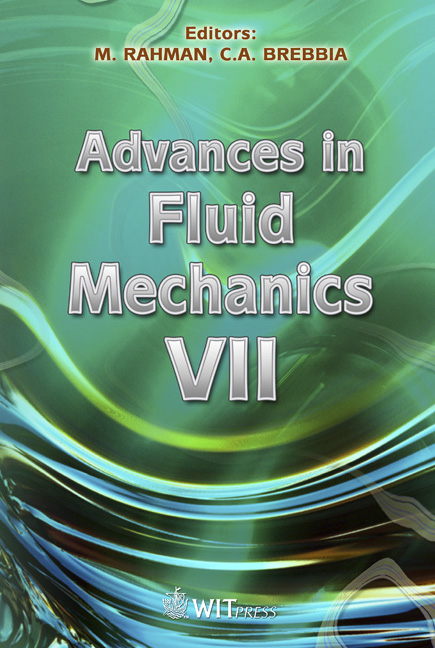Experimental Study On The Oscillation Of A Separating Shear Layer In A Cavity
Price
Free (open access)
Transaction
Volume
59
Pages
10
Page Range
201 - 210
Published
2008
Size
2,638 kb
Paper DOI
10.2495/AFM080201
Copyright
WIT Press
Author(s)
Y. Inoue & S. Yamashita
Abstract
This study was performed to clarify the oscillation of a separating shear layer in a cavity formed peripherally on a cylinder in a uniform axial stream. Experiments were conducted on the cavity having the width-depth ratio of 4 and formed in a water channel. Firstly, the dynamic characteristics of the flow field were investigated by visualizing the flow, and a time-averaged flow field was measured with a particle imaging velocimetry (PIV). As a result, the typical three flow patterns were demonstrated. Secondly, spatiotemporal measurements were taken along and/or across the shear layer with a UVP monitor. Thirdly, the proper orthogonal decomposition was applied to the UVP dataset, and random coefficients at the low-order POD modes were examined. As a result, two dominant time scales of f b/Um = 0.1 and 0.9 were found in the shear layer. These two-scale flow structures can be shown through filtration with discrete wavelet transformation. Keywords: cavity flow, self-sustaining oscillation, ultrasonic Doppler method, wavelet analysis, POD. 1 Introduction In many cases, the flow passing across an open cavity generates self-exited oscillation, causing two major problems: radiating noise and fluid induced oscillation. Although the characteristics of cavity oscillation have been studied in recent decades, there are still some problems that remain unsolved even today. The details of these problems were perused by Rockwell and Naudascher [1] and Grace [2] in their prospective papers and by Lin and Rockwell [3] and Howe [4].
Keywords
cavity flow, self-sustaining oscillation, ultrasonic Doppler method, wavelet analysis, POD.





